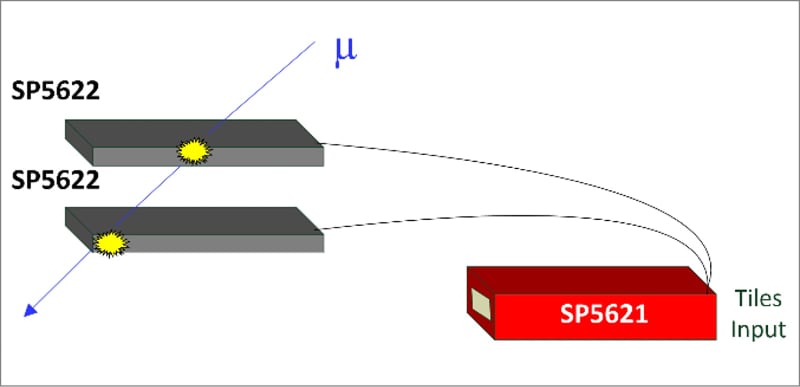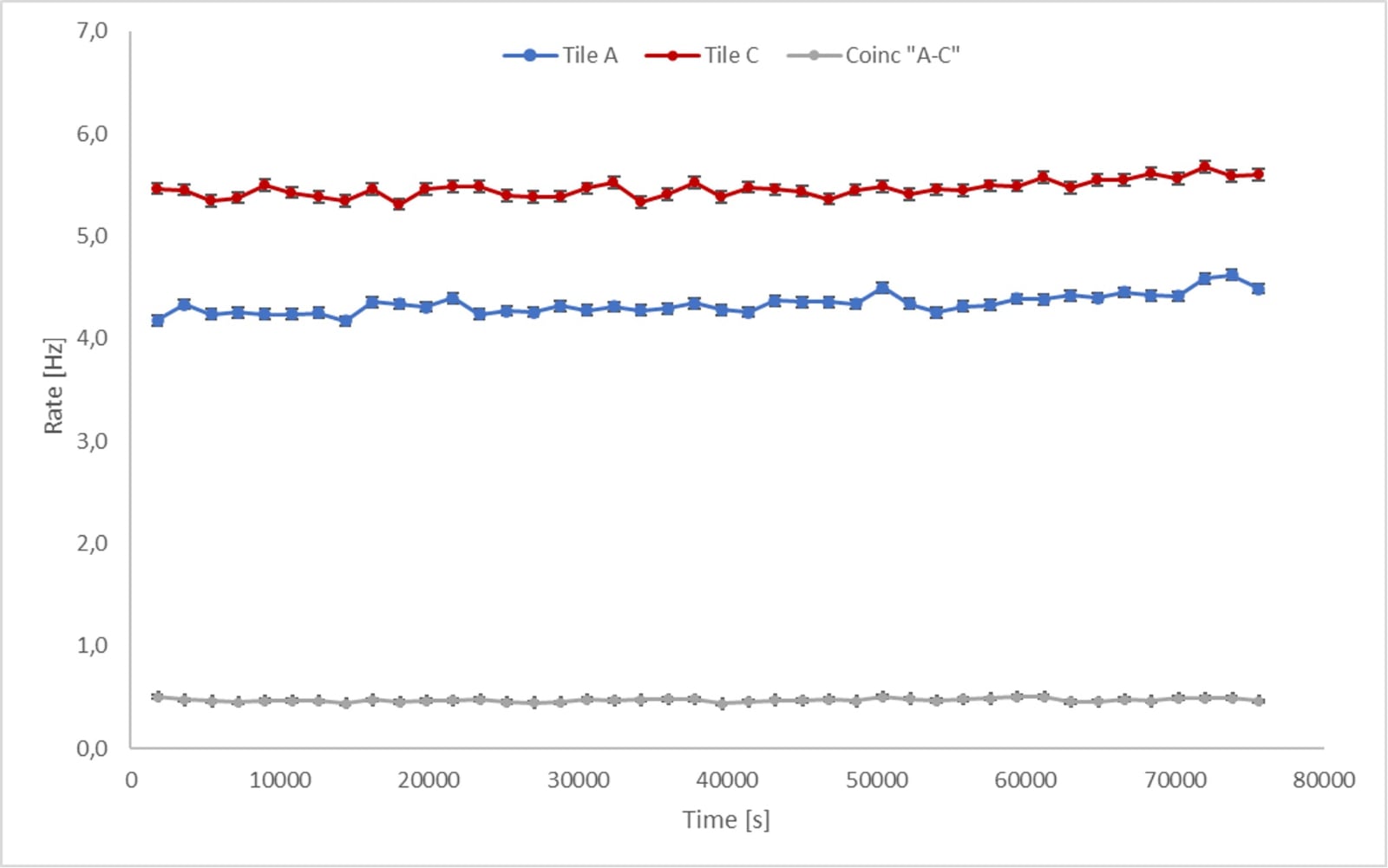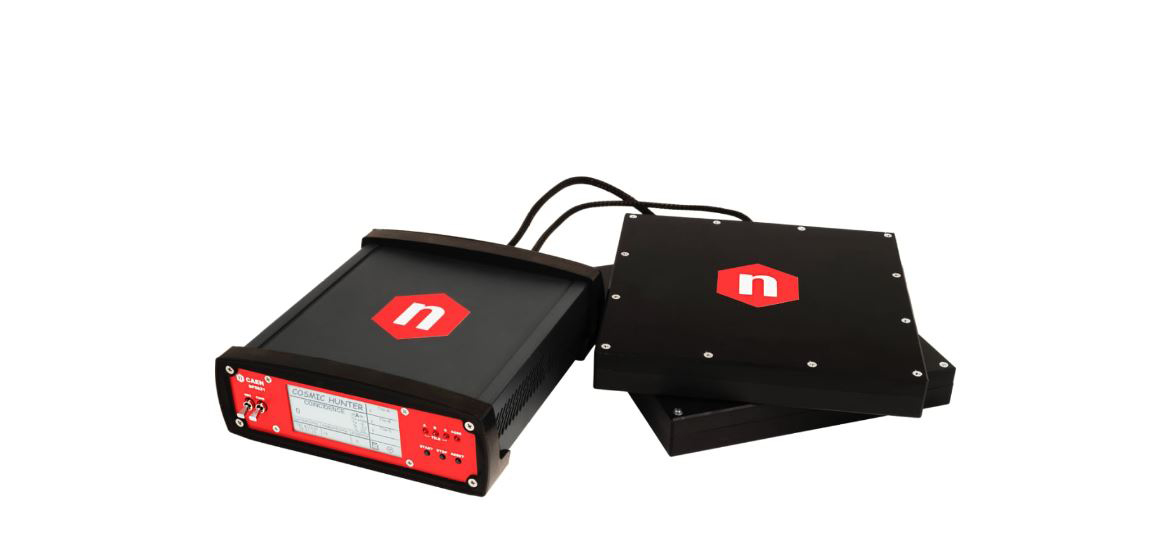| Difficult | Execution Time | Data Analysis | Radioactive Sources |
|---|---|---|---|
| No | Yes |
Hardware setup
This experiment guide is referred to the SP5622 educational kit. If you don’t have this kit, choose your own from the following list to visualize the related experiment guide: SG6211A – Educational Kit.
Equipment: SP5622 – Detection System
| Model | SP5622 |
|---|---|
| Description | Detection System |
Purpose of the experiment
Cosmic ray detection using a system composed of two plastic scintillating tiles directly coupled to a Silicon Photomultiplier detector.
Fundamentals
Muons are produced by the decay of pions and kaons generated by the hadronic interaction of the primary cosmic rays with atmospheric nuclei. They are the most common cosmic rays at sea level.
Cosmic muons are charged particles which are produced high in the atmosphere (typically 15 km) and with very high penetration capability in matter. Their mass (∼200 times the mass of an electron), the absence of strong interactions, their long lifetime (τ ~ 2,2×10-6 s) and the time dilation effect due to their highly relativistic velocities allow muons to cross the atmosphere and reach the Earth’s surface. The average energy of a muon at sea level is around 4 GeV.
Carrying out the experiment
Connect the cable connectors of the two SP5622 to the inputs located on the rear panel of the SP5621 module. Power on the SP5621 module and start acquisition via the front panel START button. When a charged particle crosses the black tile it’s energy is converted into scintillation light. The photons which are produced are detected by the photosensor and converted into an electrical signal. The number of counts for each scintillator is available via the SP5621 display. Note that also spurious electrical signals are likely to be detected by the photosensor, thus increasing the noise. Putting two SP5622 in coincidence will greatly reduce the number of these spurios events. Because acquisition of the events will take place only in the presence of the coincidence, all events coming from a cosmic particle that crosses only one scintillating tile will be automatically discarded.
A muon telescope can be realized by playing with the geometry of the two SP5622. For example, by increasing the distance between the two scintillating tiles the direction of the particles will be more defined and the solid angle will be reduced. Conversely, by reducing the distance between the two scintillating tiles the solid angle will become greater and the direction of the particles will be less defined.

Experimental setup block diagram
Results
Double tile coincidence plays a key role in cosmic ray detection. It should be used to reduce the random counts, select the solid angle, and measure the cosmic rate.

Counts Rate of the single tiles and their coincidence as a function of the time.


